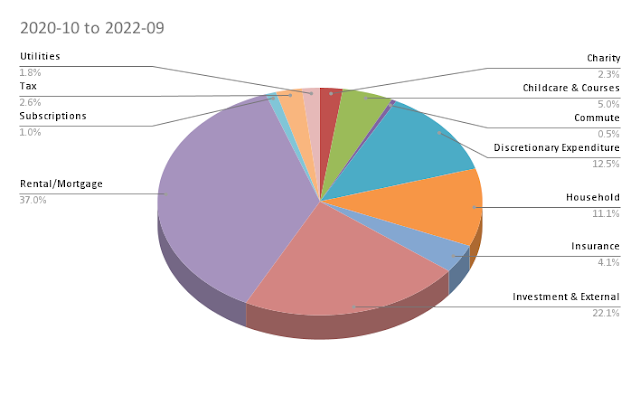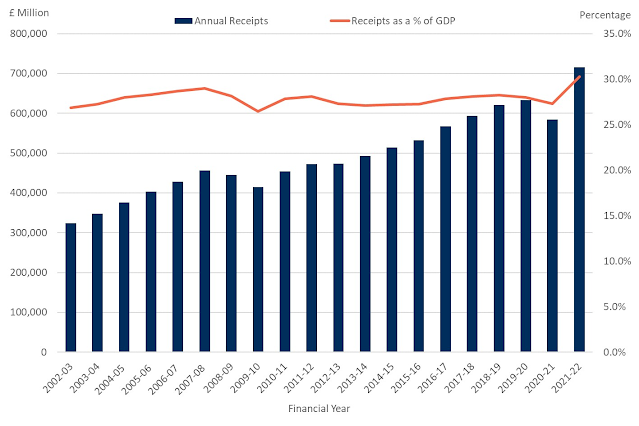Economics of a Rikshaw Puller in Delhi
On my recent trip to Delhi, I had the opportunity to travel in a cycle rickshaw (the Metro-town connections are still not good in some places like Dwarka) and I chatted up with all the rickshaw pullers I engaged with to try and understand their economic condition.
Turns out that they earn anywhere between Rs. 100 and Rs. 150 per day. Assuming an average of Rs. 125, they end up earning Rs. 3750 per month. Their monthly rents vary between Rs. 800-Rs. 1100 a month. Again, an average of about Rs. 1000 for accommodation and a Rs. 1000 for food (around the consensus figure) and some miscellaneous expenses, leaves them saving about Rs. 1200 per month. The guys I spoke to, shared their income with their families back home, but they admitted that end up sending something around Rs. 1000 a month for their families. So, as per my suspicion, it doesn't leave much for their families to survive on, forget the option of providing a brighter future for their children.
Those who had families in Delhi struggled even more with the incomes that they wished that their families could stay back in villages.
There was however one silver lining. All of them I spoke to, end up renting the rickshaws from the owner. That rent alone is about Rs. 30 per day. This amount includes the cost of a rickshaw plus any major repairs that might be needed, but any minor repairs will have to be borne by the puller himself. The owner also provides for 3 off-days, whether you take it or leave it, which means he has to pay only for 27-28 days of rent in a month. If you factor that in, that is Rs. 840 a month that the rickshaw puller could potentially save.
The average cost of a Rickshaw is anywhere between Rs. 8000-9000, which can easily serve a puller for anywhere around 10 years, and probably more. This cost can be recovered from the rent he saves for a year. So, for the next 9 years, he gets to save something around Rs. 750 more (I am setting aside Rs. 90 a month towards the expense of "major" repairs) per month for 9 years. That effectively increases the net income for the family back in the village by 75% potentially paving the way for a brighter future for the next generation.
Then, if the above mathematics looks reasonable to you, then you will agree that this funding fits the bill for a micro-finance institution, like RangDe, to step in. It is well within the standard investment levels they make. The return payments for the first year can be the rent that they are already used to and then once the repayment is done in full, the rickshaw is for the pullers to use.
Any hurdles? Yes. Lobbies. The rickshaw owners (the ones who rent out the rickshaws) are sort of local overlords with deep connections into the local political circuit. They wouldn't want these pullers to become self-sufficient, since it kills their golden geese. So, what is needed for RangDe to function in this space is a field partner that can potentially counter the owners through educating the rickshaw pullers and providing them with logistics help to make their experience smooth.
Will RangDe take up such an initiative? Anybody else?
(Disclaimer: The facts presented here are from a few interviews only, but there is enough consistency from different pullers and the lack of a motivation to lie about it, that I believe it is representative.)
(Photo Credit: Wikimedia Commons.)
Turns out that they earn anywhere between Rs. 100 and Rs. 150 per day. Assuming an average of Rs. 125, they end up earning Rs. 3750 per month. Their monthly rents vary between Rs. 800-Rs. 1100 a month. Again, an average of about Rs. 1000 for accommodation and a Rs. 1000 for food (around the consensus figure) and some miscellaneous expenses, leaves them saving about Rs. 1200 per month. The guys I spoke to, shared their income with their families back home, but they admitted that end up sending something around Rs. 1000 a month for their families. So, as per my suspicion, it doesn't leave much for their families to survive on, forget the option of providing a brighter future for their children.
Those who had families in Delhi struggled even more with the incomes that they wished that their families could stay back in villages.
There was however one silver lining. All of them I spoke to, end up renting the rickshaws from the owner. That rent alone is about Rs. 30 per day. This amount includes the cost of a rickshaw plus any major repairs that might be needed, but any minor repairs will have to be borne by the puller himself. The owner also provides for 3 off-days, whether you take it or leave it, which means he has to pay only for 27-28 days of rent in a month. If you factor that in, that is Rs. 840 a month that the rickshaw puller could potentially save.
The average cost of a Rickshaw is anywhere between Rs. 8000-9000, which can easily serve a puller for anywhere around 10 years, and probably more. This cost can be recovered from the rent he saves for a year. So, for the next 9 years, he gets to save something around Rs. 750 more (I am setting aside Rs. 90 a month towards the expense of "major" repairs) per month for 9 years. That effectively increases the net income for the family back in the village by 75% potentially paving the way for a brighter future for the next generation.
Then, if the above mathematics looks reasonable to you, then you will agree that this funding fits the bill for a micro-finance institution, like RangDe, to step in. It is well within the standard investment levels they make. The return payments for the first year can be the rent that they are already used to and then once the repayment is done in full, the rickshaw is for the pullers to use.
Any hurdles? Yes. Lobbies. The rickshaw owners (the ones who rent out the rickshaws) are sort of local overlords with deep connections into the local political circuit. They wouldn't want these pullers to become self-sufficient, since it kills their golden geese. So, what is needed for RangDe to function in this space is a field partner that can potentially counter the owners through educating the rickshaw pullers and providing them with logistics help to make their experience smooth.
Will RangDe take up such an initiative? Anybody else?
(Disclaimer: The facts presented here are from a few interviews only, but there is enough consistency from different pullers and the lack of a motivation to lie about it, that I believe it is representative.)
(Photo Credit: Wikimedia Commons.)


Comments